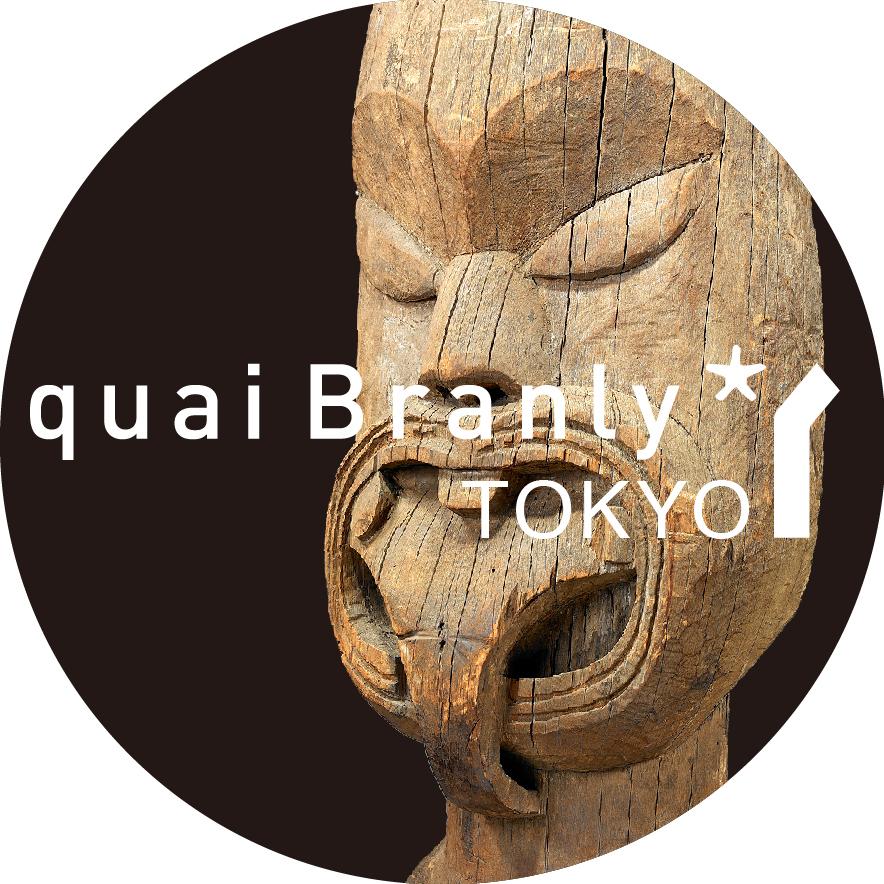Quai Branly Tokyo "Arts premiers: Māori Wood Sculpture"
2015.02.17-2016.02.07
SPECOLA
The third installation of Quai Branly Tokyo consists of three exquisite works representative of the refined and intensely expressive wood sculpture produced by the Māori, the autochthonous people from New Zealand.
-----
The status of museum collections changes with time. Items once considered as ethnological specimens are now treated as artworks. In recent years, there is a striking tendency in Western museums to reconsider their non-Western collections, from Africa, Asia, Oceania and Central & Southern America, displacing them from the domain of scientific specimens to the realm of artistic and cultural property. The musée du quai Branly is one of the museums in the vanguard of such a movement. There was a time when the heritage of anthropology and ethnology was named "Primitive art”, but this appellation, fraught with the nuance that such art was immature, was soon rejected as it was based on the canons of Western aesthetics. In an era of rapid globalization of our lifestyles, the cultural heritage from non-Western areas of the world, generically named Tribal art in English and Arts premiers in French, is currently in the limelight as representing the diversity of civilizations, in a way comparable to biodiversity. When looking at the wood sculptures of the Māori, New Zealand’s autochthonous people, we can immediately grasp the difference with our own aesthetic sense. A transcendent being is expressed frontally in the form of a human figure, sticking out its tongue to the viewer. Indeed there may be regional variations in such expressions. However, it is also a fact that beyond religious and ethnic differences, we can find common expressions and icons in each region of the world.
Yoshiaki Nishino
-----
Māori Sculptures From New Zealand Aotearoa
Human figures sculpted by Māori artists are called Tiki. In Polynesia, Tiki was the first deified man. Most times, they represent real ancestors of a tribe (iwi), with stylized or naturalistic features. Some sculptures with precise attributes also refer to the founding divinities of the Māori world. Specialized sculptors (tohunga) were themselves considered in the past as mediators of the ancestors, who dictated their gestures.
These two large-sized statues were placed in a sacred and forbidden enclosure (vahi tapu), where the corpses of the deceased were laid until their definitive funeral. Placed close to the corpse, each effigy represented the defunct. The same type of sculpture was also found on top of fences fortifying traditional Māori villages. These images symbolized the strength, the pride and the distrust of the village’s occupants. The tongue sticking out is an expression of such distrust. Men thus stuck out their tongue during ceremonies welcoming a neighboring tribe or during battles, in order to impress opponents. Dilated nostrils and the tongue sticking forward made visible the vital breath defying death.
The masculine figure with naturalistic features (poutokomanawa) was sculpted at the base of the central pillars sustaining the roof of communal houses (wharenui) proper to each tribe (iwi). These houses are located on a marae, a place in the village where customary events (weddings, funerals, welcome of tribes, etc.) were held. The building symbolizes the tribe’s founding ancestor. Inside the house, the poutokomanawa sculpture represents a prestigious defunct, whose memory is to be kept alive, whose accomplishments are to be honored, and whose prestige and authority (mana) are to be asserted. The hands laying on the stomach are a conventional representation of the ancestors. Here, the face is partly engraved with tattoo patterns. These geometric patterns, derived from natural forms, mark the represented individual’s sex, age, membership to a tribe, genealogy and status.
Yves Le Fur
Organized by Yves Le Fur (Director of the Department of Heritage and Collections, Musée du quai Branly)
With the support of Mr. Christian Polak + K.K. SERIC
-----
About Quai Branly Tokyo
Opportunities are rare in Japan to experience the startling diversity of the bold and enigmatic forms produced by civilizations throughout the world. This thematic presentation of masterpieces selected from the collections of the musée du quai Branly in Paris, addressing the major preoccupations of humankind in resonance and in confrontation with the University of Tokyo collections, is the place for such an encounter. This perennial embassy of a French national museum in the heart of Tokyo emanates from a cultural and scientific collaboration of a new kind between the musée du quai Branly and the Intermediatheque: a selection of emblematic items from Africa, Asia, Oceania, and the Americas will be regularly exhibited to the Japanese public, prompting a conversion of our worldview. Resolutely working at the crossroads of all cultures, periods and domains, both institutions share a novel approach to interdisciplinary museum activities.
Organized by The University Museum, The University of Tokyo (UMUT) + Musée du quai Branly
With the support of Mr. Christian Polak + K.K. SERIC
The musée du quai Branly
The musée du quai Branly, which opened its doors in Paris in June 2006, emanates from the Pavillon des Sessions rooms at the Louvre Museum, featuring the arts of Africa, Asia, Oceania and the Americas. At the initiative of Jacques Chirac, president of the French Republic from 1995 to 2007, and built by 2008 Pritzker prize-winning architect Jean Nouvel, the musée du quai Branly is committed to giving the Arts and Civilizations of Africa, Asia, Oceania, and the Americas the place they deserve at the intersection of multiple cultural, religious, and historical influences. Located along the Seine at the foot of the Eiffel Tower, the museum defines itself as a place of scientific and artistic dialogue, a crossroads of exchange between the public, researchers, students, and contemporary artists. Throughout the year, exhibitions, concerts, shows, conferences, workshops, and screenings set the pace of life at the museum.
Quai Branly official HP
© musée du quai Branly, photo Claude Germain

